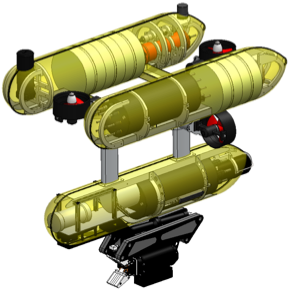Coordinator: Laboratory UJI-IRSLab (Interactive and Robotic Systems)
Balearic Islands University (UIB)
During the last years, the consortium members have done a significant effort to participate in international networks and associations related to robotics in general and marine robotics in particular. The three teams participate in Eurobotics AISBL, being active members of the Marine Robotics Topic Group. They are also members of the IEEE Robotics and Automation (RAS) and Oceanic Engineering Societies (OES). Pedro J. Sanz has been the Vice Chair of the Spanish Chapter of the RAS. Gabriel Oliver has been the Chair of the Spanish chapter of the OES (2007-14), charge held now by Marc Carreras. Pere Ridao is the chair of the IFAC Technical Committee on Marine Systems (TC7.2) and Gabriel Oliver is member of the same TC. Oliver and Ridao have been chairs of the Automar group of the Comité Español de Automática (CEA-IFAC), while Sanz has been the coordinator of the Robotics group (CEA-IFAC).
While commercially available Autonomous Underwater Vehicles (AUVs) are routinely used in survey missions, a new set of applications exist which clearly demand intervention capabilities. The maintenance of permanent underwater observatories, submerged oil wells, cabled sensor networks, pipes and the deployment and recovery of benthic stations are but a few of them. Nowadays, these tasks are addressed using manned submersibles or work-class ROVs (Remotely Operated Vehicle), equipped with teleoperated arms. Current Intervention-AUVs (I-AUVs) prototypes are big and complex systems exhibiting only a limited set of functionalities including docking and fixed based manipulation on a subsea panel, as well as search and recovery of simple objects. However, as in the case of human manipulation, more sophisticated applications, like transporting and manipulating bulky objects, or assembling complex structures underwater, would require several I-AUVs working cooperatively. This project aims to achieve a step forward beyond the current underwater intervention state of the art. The development of a new kind of I-AUVs, able to work autonomously, alone or in a cooperative way, opens the door to face the multi-purpose underwater intervention problem, with potential applications not only in the offshore and nuclear industries, but also in archeology, oceanography or search and rescue missions, among other purposes.

The scientific and technological results of this project will contribute to consolidate our international leadership in this field of research. The new mechatronics to be developed is essential to demonstrate in an experimental way the innovative and challenging concept of underwater cooperative mobile manipulation for the first time in the world. The new AUV, the robotic arm and all the associated methods and technologies developed, will permit achieving a unique twin I-AUV system and will represent a step forward in the knowledge’s frontiers. This will allow us to study promising research lines in a nearly unexplored research field in the underwater domain.
TWINBOT project aims to achieve a step forward in the underwater intervention state of the art. A set of two I-AUV's will be able to solve strategic missions devoted to cooperative survey and cooperative manipulation (transport and assembly) in a complex scenario. A multimodal communication (RF/VLC/acoustics) architecture will be used to communicate both vehicles. A laser scanner will provide 3D point clouds of the objects of interest which will be used by an object recognition architecture to identify and locate them for manipulation and semantic SLAM purposes. Potential applications, include oceanography (permanent observatories), offshore (oil and gas) and nuclear industries. TWINBOT will push the knowledge frontiers by targeting cooperative load transport and cooperative mobile assembly tasks never demonstrated before, in an autonomous way.

Beyond RAUVI, TRIDENT, TRITON and MERBOTS. TWINBOT exploits the technologies and know-how developed by the consortium in previous projects and boosts them to bring the teamwork to the core of the manipulation task itself by using twin AUVs both equipped with a robot arm to achieve shared goals including bulky load transport and cooperative object assembly.